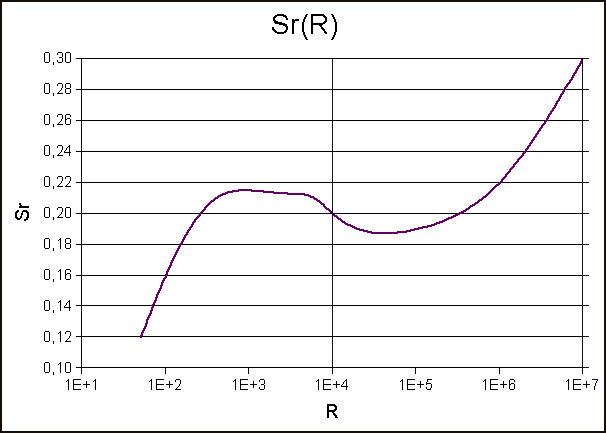 | ||
In dimensional analysis, the Strouhal number (St) is a dimensionless number describing oscillating flow mechanisms. The parameter is named after Vincenc Strouhal, a Czech physicist who experimented in 1878 with wires experiencing vortex shedding and singing in the wind. The Strouhal number is an integral part of the fundamentals of fluid mechanics.
The Strouhal number is often given as;
where f is the frequency of vortex shedding, L is the characteristic length (for example hydraulic diameter, or the airfoil thickness) and U is the flow velocity. In certain cases like heaving (plunging) flight, this characteristic length is the amplitude of oscillation. This selection of characteristic length can be used to present a distinction between Strouhal number and Reduced Frequency.
where k is the reduced frequency and a is amplitude of the heaving oscillation.
For large Strouhal numbers (order of 1), viscosity dominates fluid flow, resulting in a collective oscillating movement of the fluid "plug". For low Strouhal numbers (order of 10−4 and below), the high-speed, quasi steady state portion of the movement dominates the oscillation. Oscillation at intermediate Strouhal numbers is characterized by the buildup and rapidly subsequent shedding of vortices.
For spheres in uniform flow in the Reynolds number range of 8x102 < Re < 2x105 there co-exist two values of the Strouhal number. The lower frequency is attributed to the large-scale instability of the wake and is independent of the Reynolds number Re and is approximately equal to 0.2. The higher frequency Strouhal number is caused by small-scale instabilities from the separation of the shear layer.
Applications
In metrology, specifically axial-flow turbine meters, the Strouhal number is used in combination with the Roshko number to give a correlation between flow rate and frequency. The advantage of this method over the freq/viscosity versus K-factor method is that it takes into account temperature effects on the meter.
f = meter frequency, U = flow rate, C = linear coefficient of expansion for the meter housing material
This relationship leaves Strouhal dimensionless, although a dimensionless approximation is often used for C3, resulting in units of pulses/volume (same as K-factor).
In animal flight or swimming, propulsive efficiency is high over a narrow range of Strouhal constants, generally peaking in the 0.2 < St < 0.4 range. This range is used in the swimming of dolphins, sharks, and bony fish, and in the cruising flight of birds, bats and insects. However, in other forms of flight other values are found. Intuitively the ratio measures the steepness of the strokes, viewed from the side (e.g., assuming movement through a stationary fluid) – f is the stroke frequency, L is the amplitude, so the numerator fL is half the vertical speed of the wing tip, while the denominator V is the horizontal speed. Thus the graph of the wing tip forms an approximate sinusoid with aspect (maximum slope) twice the Strouhal constant.
